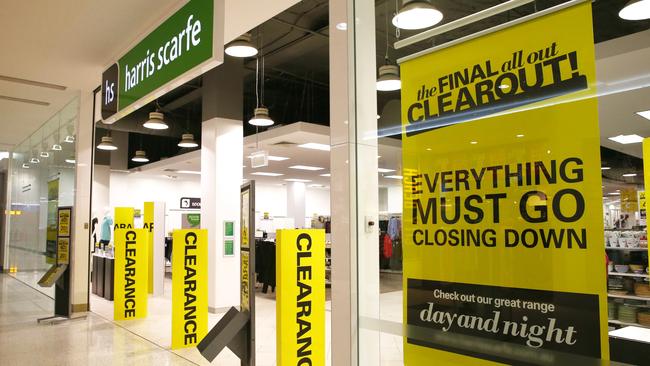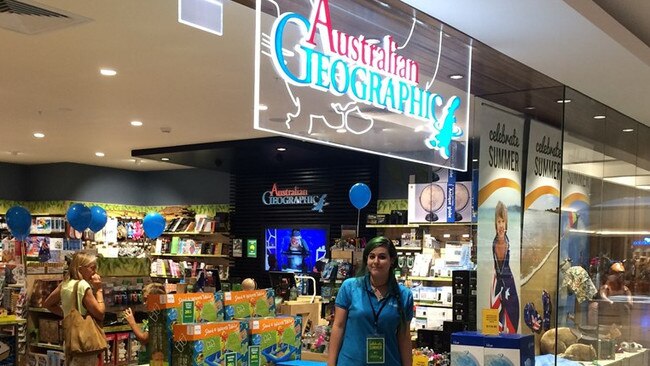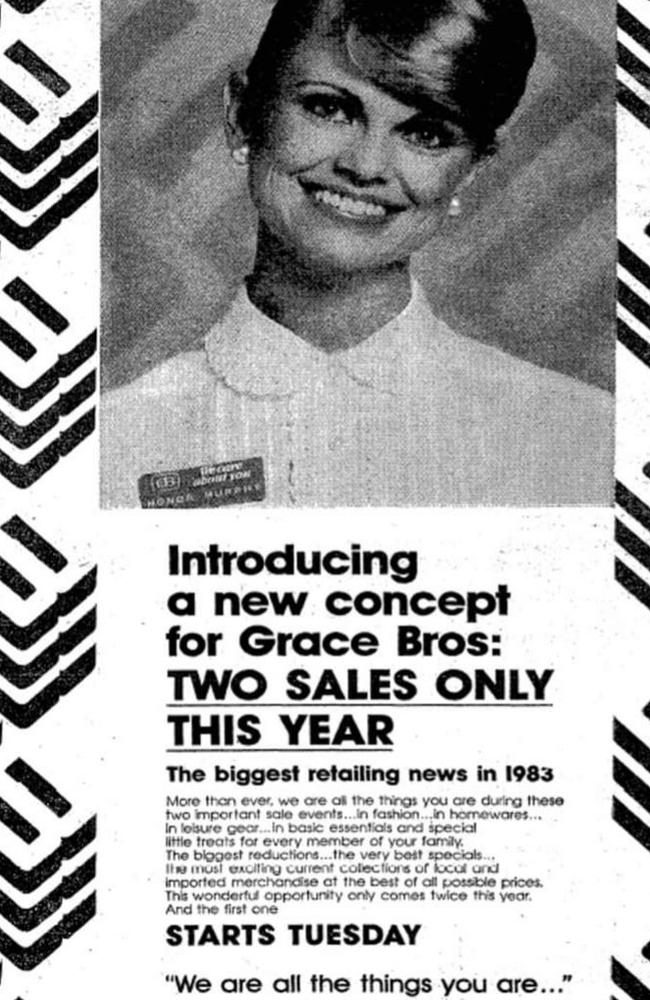Inside Australia’s 2020 retail bloodbath as brands rocked by mass closures by mid-January
We’re only halfway through January, but dozens of popular stores have already announced they’re shutting up shop. So what’s really going on?

Retail
Don't miss out on the headlines from Retail. Followed categories will be added to My News.
The brutal 2020 retail bloodbath has well and truly begun, with 161 popular Australian bricks-and-mortar stores already earmarked for closure just one fortnight into the new year.
It started early on January 7 when it was revealed department store Harris Scarfe was set to shut 21 stores across five states over the course of just one month after the retailer was placed in receivership in December.
Just days later, McWilliam’s Wines – the country’s sixth-largest wine company that has been run by the same family for more than 140 years – announced it had also appointed voluntary administrators.
Then it was popular video game chain EB Games’ turn, with the business confirming it was closing at least 19 stores across the country within weeks, while fashion chain Bardot is also planning to shutter 58 stores across the nation by March.

This week, it also emerged Curious Planet – the educational retailer previously known as Australian Geographic, which is owned by parent company Co-op Bookshop – would pull 63 stores across Australia after failing to find a buyer for the brand.
And just yesterday news broke Jeanswest had entered voluntary administration, leaving 988 jobs at 146 stores in doubt and with KPMG blaming “current tough market conditions and pressure from online competition”.
According to Queensland University of Technology retail expert Dr Gary Mortimer, it has been a shocking start to the new decade – and the crisis is far from over.
“It has been a nightmare, and I think we’ll see this continue to happen over the next month,” he said.
“There would have been retailers out there hoping and banking on a strong Christmas, but unfortunately, I don’t think that has happened.
“We’re seeing this emerging trend (of retail closures) and commentators are terming it a ‘retail apocalypse’.”
Dr Mortimer said while it wasn’t “the End of Days” for the retail industry as a whole, we were now well and truly in the grip of a “market correction” which he likened to Australia’s economic downturn in the 1990s, which was famously described as “the recession we had to have”.

LAZY RETAILERS
Dr Mortimer said there was an element of “lazy retailing” among some of the companies that had collapsed recently.
“Look at the two big supermarkets, Coles and Woolies. They were lazy retailers for decades and didn’t really compete with each other – there were no price wars until Aldi turned up and made them think to invest in stores, improve distribution and expand their private labels,” he said.
“Now it’s the fashion and footwear categories that are exposed to not just competition from fast fashion, but also a much more improved discount department store offer.”
Dr Mortimer said a number of fashion and footwear brands were mistakenly hoping to rely on their longevity in the market or heavy discounting to ride out the increased competition.

“There’s a sense that it’s all too hard, and instead of sourcing better products and improving staff training, they just discount which is a lazy way to try and respond to competitive threats,” he said.
“When you discount by 20 or 30 per cent, all it means is you have to sell more inventory just to get to the same sales levels as last year, but there are more logistics and costs involved with sales, which means things continue to deteriorate and eventually you go out of business.”
Dr Mortimer said he was certain other retailers would fall over in January and February, but that global fast fashion brands had the money and power behind them to survive.
“It’s the middle-tier fashion retailers in the sector that are feeling the heat – those male and female middle-market retailers selling at price points of between $29 and $49 that have no point of difference from what you’d get from H&M or Target,” he said.

WORRYING SIGNS
Dr Mortimer said there were specific signs to watch out for when it comes to predicting other future retail victims.
“Footwear retailers that are constantly doing ‘buy a second pair half price’ promotions, kitchen retailers with constant 70 per cent off sales and retail categories that are exposed to digital disruption are at risk – if I can download a game or movie or sit at home and binge-watch Netflix, I don’t need to buy a physical box set of DVDs,” he said.
Dr Mortimer said that in 1983, Grace Brothers – now Myer – released an ad promoting a radical new concept: just two sales only per year.
But today, it has become commonplace to see sales of 40 to 60 per cent off throughout the year – a sign Dr Mortimer said was “always concerning”.
“It’s becoming the norm these days, and customers are becoming conditioned to never pay full price,” he said.
He said it was especially concerning to see fashion stores heavily discounting their stock during the peak spring racing carnival period.
“If you can’t sell at full price then, then you never will,” he said.

RETAIL WOES
This year’s first dismal fortnight follows a horror 2019 that brought the collapse of a slew of Aussie businesses, with some international players also folding in recent months.
Last January, menswear retailer Ed Harry went into voluntary administration, and a week later, Aussie sportswear favourite Skins also revealed it was on the brink of failure after applying for bankruptcy in a Swiss court.
At the end of the month, the Napoleon Perdis beauty empire announced the cult make-up chain’s 56 Aussie stores had closed for stocktake. Administrators were appointed, and scores of stores have since collapsed.
Footwear trailblazer Shoes of Prey also met its demise in March last year along with British fashion giant Karen Millen, which in September revealed it would soon shut all Aussie stores, leaving around 80 jobs in peril.
In October, celebrity chef Shannon Bennett’s Melbourne burger chain Benny Burger was also placed into administration, followed by seven Red Rooster outlets in Queensland just days later and then Aussie activewear sensation Stylerunner, which has since been sold to Accent Group Limited.
In November, it was revealed that popular furniture and homewares company Zanui was in trouble after it abruptly entered voluntary administration, leaving angry customers in the lurch.
Later that month, Muscle Coach, a leading fitness company, was put into voluntary administration after a director received a devastating diagnosis and the company racked up debts of almost $1 million.
Then it was the famous Criniti’s restaurant chain’s turn to enter into voluntary administration, with several of the 13 sites across the country set to close for good. It was closely followed by discount legend Dimmeys.
Australian department store Harris Scarfe was also placed into voluntary administration in mid-December.
Originally published as Inside Australia’s 2020 retail bloodbath as brands rocked by mass closures by mid-January

